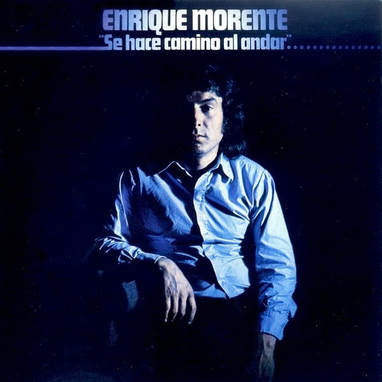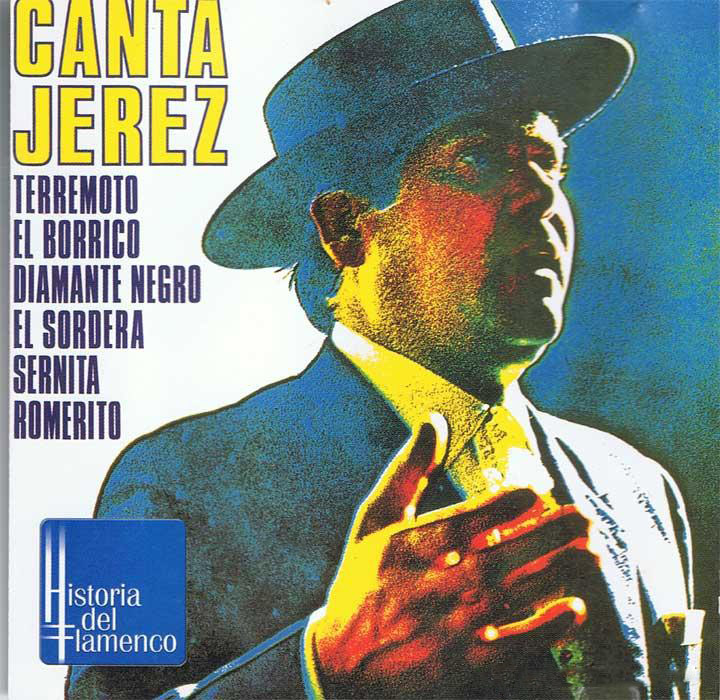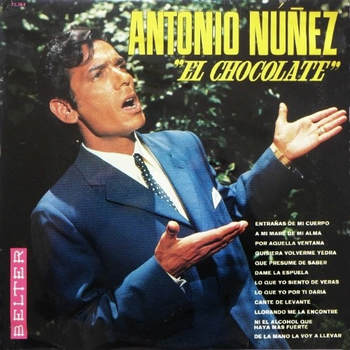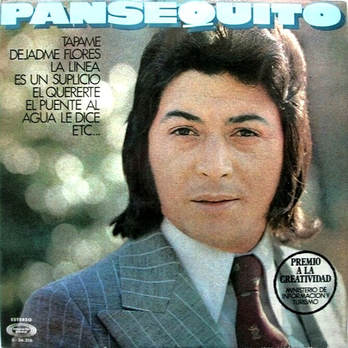Enrique Morente, “It is done by walking”
I have to confess that in my early days as a flamenco aficionado I didn’t quite appreciate Enrique Morente’s cante. At that time, my concept of cante was something else. As my understanding of flamenco matured, I began to assimilate new interpretative horizons. Nowadays, Enrique Morente is one of my favorite cantaores, whom I never get bored of, and from

“If you don’t like something, ask yourself if it’s really worthless, or if maybe you’re just not ready to feel and understand it yet, because arrogance closes the doors of knowledge”.
Wise Don Manolo!
Enrique Morente Cotelo (b. Granada, 1942 – d. Madrid, 2010), or simply Enrique Morente in the art of flamenco, has an extensive discography, a monumental work including the popular and the intellectual, tradition and experimentation, the memory of the old masters and his own mastery. The album we’re discussing today was produced by the flamencologist José Blas Vega and includes the brilliant guitars of Manzanita, Luis el Habichuela and Amador. It was released in 1975 with the title “Se hace camino al andar” (Clave-Hispavox 18-1342 S), evocative title meaning “The path is made by walking”, inspired in Antonio Machado’s well-known poem “Caminante no hay camino…” (“Walker, there is no path…”), basically a statement of intent by Enrique, who after exploring and learning from the old masters like Pepe el de la Matrona, Aurelio de Cádiz, Bernardo el de los Lobitos and Rafael Romero, decides to forge his own path, step by step, making his own path by walking. The album features a text by José Luis Ortiz Nuevo which is worth quoting:
“Morente, brave in his innovative maturity, young and old like the authentic tradition of those who were not satisfied with repeating again and again the old cantes who once were new, and which can also become anew in our days…”
So much so that in this album our protagonist names four different cantes after himself, like the first track: “A la hora de la muerte” (Tangos de Morente), a true delicacy for our ears, where Manzanita and Amador convey a galloping rhythm between tangos and rumba. Enrique fills this cante with innovative twists and turns, with original “ayeos” in the intro, and also at the end of the verse “A mi lengua le eché un nudo”, where he seems to evocate the typical “ayeos” more proper of of cañas and polos. Then we can hear Morente cheering on Manzatina, as the accompaniment by the six strings of this late composer, singer and guitarist would give goosebumps to the coldest aficionado. At the end of these tangos, “Abierta estaba la rosa…” I simply have no words to describe the amazing creation of Enrique Morente with the lyrics of Federico García Lorca (who incidentally was also born in Granada). Impressive. The next track, “Voces doy al viento” (Siguiriyas de Morente), Enrique is accompanied solely by Manzanita, who in the intro reminds me of the omnipotent Paco de Lucía. Morente handles these seguiriyas with a lot of personality, although he perhaps gets a bit too creative in the verses, in my humble opinion, of course. That’s still a far cry from the formidable “seguiriyón” he sang with the guitar of Juan Manuel Cañizares in Carlos Saura’s movie “Flamenco”, but we know the path is made by walking. The following track is ”Granada, calle de Elvira” (Fandangos de Granada), with an “abandolao” rhythm by Manzanita and Luis el Habichuela accompanying this fandango attributed to Frasquito Hierbabuena. Morente, Manzanita and Luis el Habichuela continue with “Lloré más que Jeremías” (Soleares), with the sounds of Alcalá and Triana ending the side A of this record. In the first track of side B, “Yo seré como la mimbre” (Tientos de Morente), this cantaor from Granada gives us a mixed bag, that is, he performs the first verses in the traditional way and then switches to his own style. Incidentally, the last lyrics that Enrique sings in these tientos, which give the name to this track, were performed many years later by Camarón de la Isla. These two geniuses admired each other, without any trace of racial prejudices, something which sadly is still latent in 21st-century flamenco. Then comes “Minerico barrenero” (Taranto), a levantica that Enrique, Manzanita and Luis el Habichuela adjusted to the rythm of taranto, where we can appreciate Morente’s full voice range. Deadly! From Spain’s Levante, we travel to Cádiz with “Sale el sol” (Alegrías), as the sounds of that ancient city could not be absent from this album, although in this occasion Morente follows more traditional parameters, wrapped by the guitars of Manzanita and Amador. The album continues with “Contando los eslabones” (Fandangos de Morente), where this cantaor sings fandangos with a taranto feel, an original innovation by Morente which oddly was first recorded by Camarón in the song “Ni que me manden a mí” (1975), although in my opinion, De la Isla had already recorded something similar a year earlier with “Se pelean en mi mente”. The album ends with ”Trabajar y madrugar” (Mineras), where Morente is accompanied solely by Manzanita, and where he sings the well-known lyrics “Me llaman Pedro el Morato“, which were also performed by his mentor Pepe el de la Matrona.
Summarizing, like the poem by Antonio Machado says:
The path, and nothing else
Walker, there is no path
The path is made by walking.
By walking the path is made
And when we turn around, looking back
We can see the track
That will never be walked again
Walker there is no path
Only wakes on the sea.
Translated by P. Young






